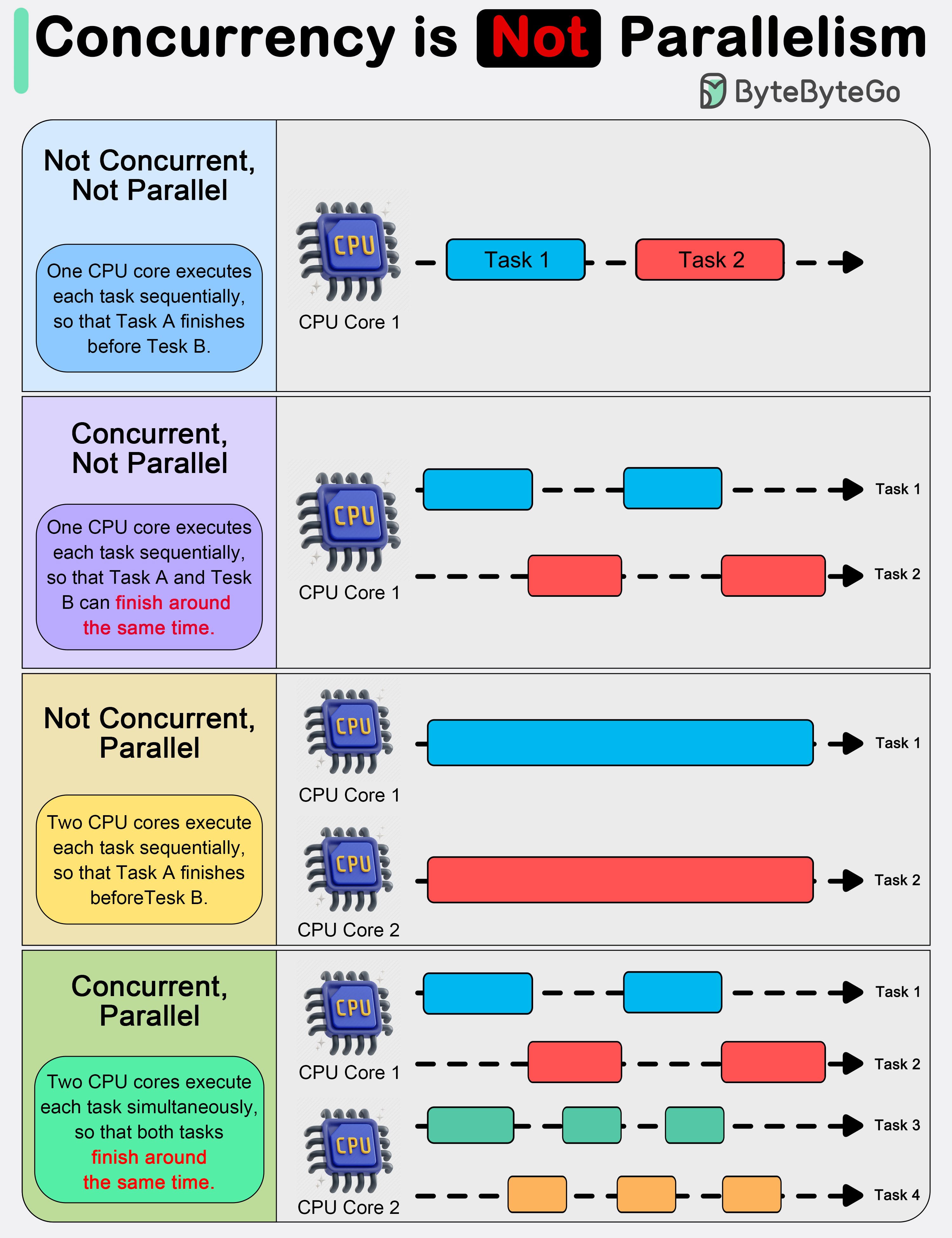Introduction to Multithreading, Concurrency, and Parallelism in Java
 Luis Gustavo Souza
Luis Gustavo Souza
When learning Java, one of the most fascinating and powerful concepts you will encounter is multithreading. It allows programs to do more than one task at the same time, making them faster, more efficient, and more responsive. However, before diving into Java’s implementation, it is important to understand three key ideas: multithreading, concurrency, and parallelism.
What is Multithreading?
A thread is the smallest unit of execution within a program. By default, every Java program runs on a single thread, called the main thread. But sometimes, one thread is not enough. Imagine you are building an application that downloads files while also allowing the user to continue browsing. If the download runs on the main thread, the program will freeze until the download is complete.
This is where multithreading comes in. Multithreading means creating and running multiple threads within the same program. Each thread performs a separate task, so the program can work on several things “at once.” In Java, you can create threads using the Thread class or by implementing the Runnable interface.
What is Concurrency?
Concurrency is the ability of a program to deal with multiple tasks at the same time. But this does not necessarily mean that tasks are running simultaneously. Instead, concurrency is about managing multiple tasks so they make progress together.
Think of a single waiter in a restaurant serving multiple tables. The waiter cannot serve everyone at once, but he switches quickly between customers, making sure each table eventually gets food. Similarly, in concurrency, the CPU switches between threads so quickly that it feels like tasks are progressing in parallel, even if only one task is being executed at a time.
What is Parallelism?
While concurrency is about handling multiple tasks at once in a shared time frame, parallelism is about actually running tasks at the same time. This requires multiple processors or CPU cores.
Imagine the same restaurant, but now with multiple waiters. Instead of just one waiter switching between tables, several waiters can serve different tables at the same time. This is true parallel execution.
In programming, parallelism provides real performance gains when tasks can be divided into independent units and executed simultaneously on multiple cores.
Concurrency vs Parallelism

Java and Multithreading
Java provides built-in support for multithreading, making it easier for developers to create concurrent and parallel programs. Some important features include:
The
Threadclass andRunnableinterface for creating threads.The
ExecutorServiceframework for managing thread pools.High-level concurrency utilities in the
java.util.concurrentpackage, such as locks, semaphores, and thread-safe collections.
These tools allow developers to write programs that are responsive, efficient, and capable of taking full advantage of modern multi-core processors.
Conclusion
Multithreading: running multiple threads inside a program.
Concurrency: managing multiple tasks so they make progress together (not always simultaneously).
Parallelism: executing multiple tasks at the exact same time on multiple cores.
Understanding these concepts is the foundation for writing efficient Java programs that can handle heavy workloads, process data faster, and provide smoother user experiences. As you continue exploring Java, you will see how these ideas play a vital role in modern application development.
Subscribe to my newsletter
Read articles from Luis Gustavo Souza directly inside your inbox. Subscribe to the newsletter, and don't miss out.
Written by
